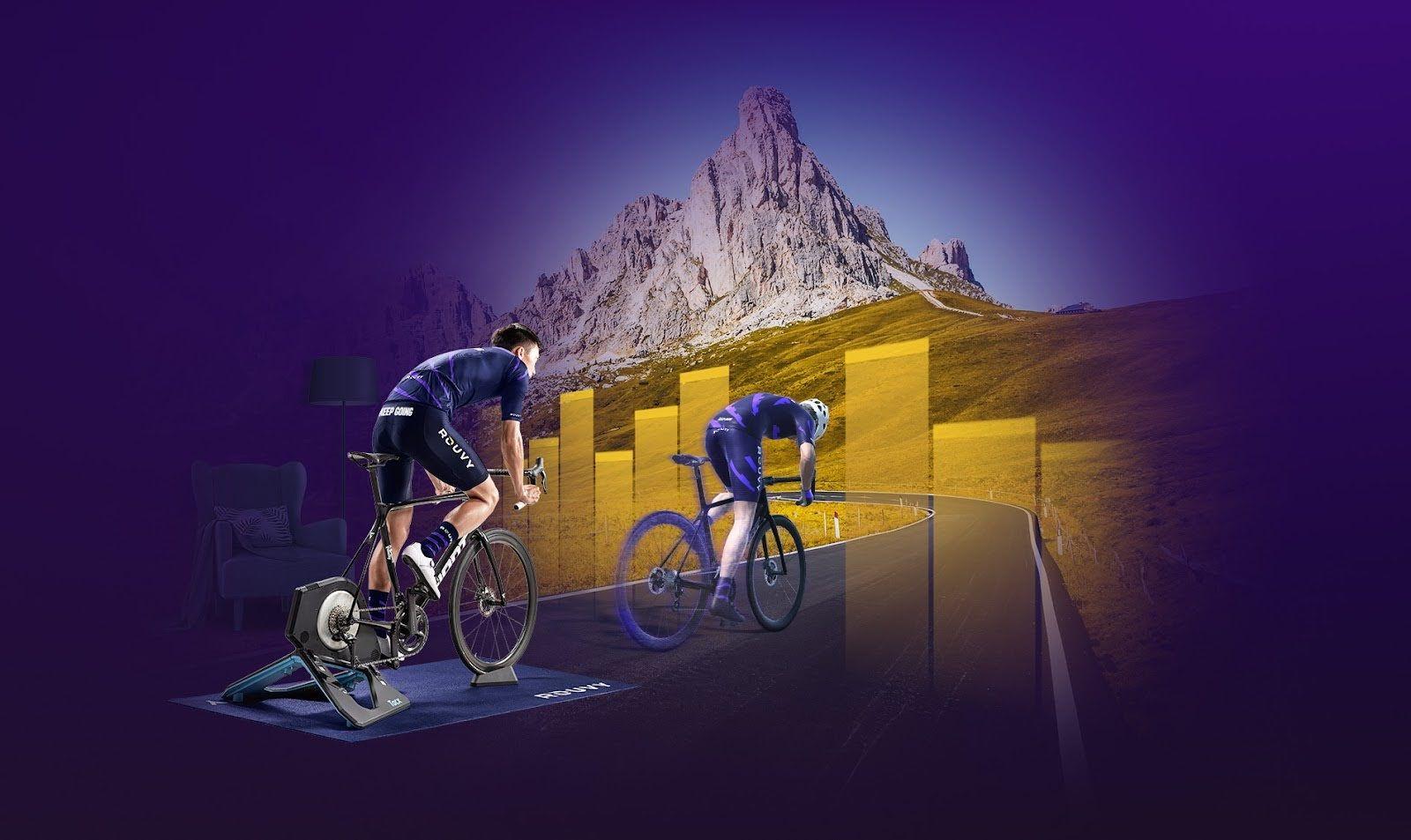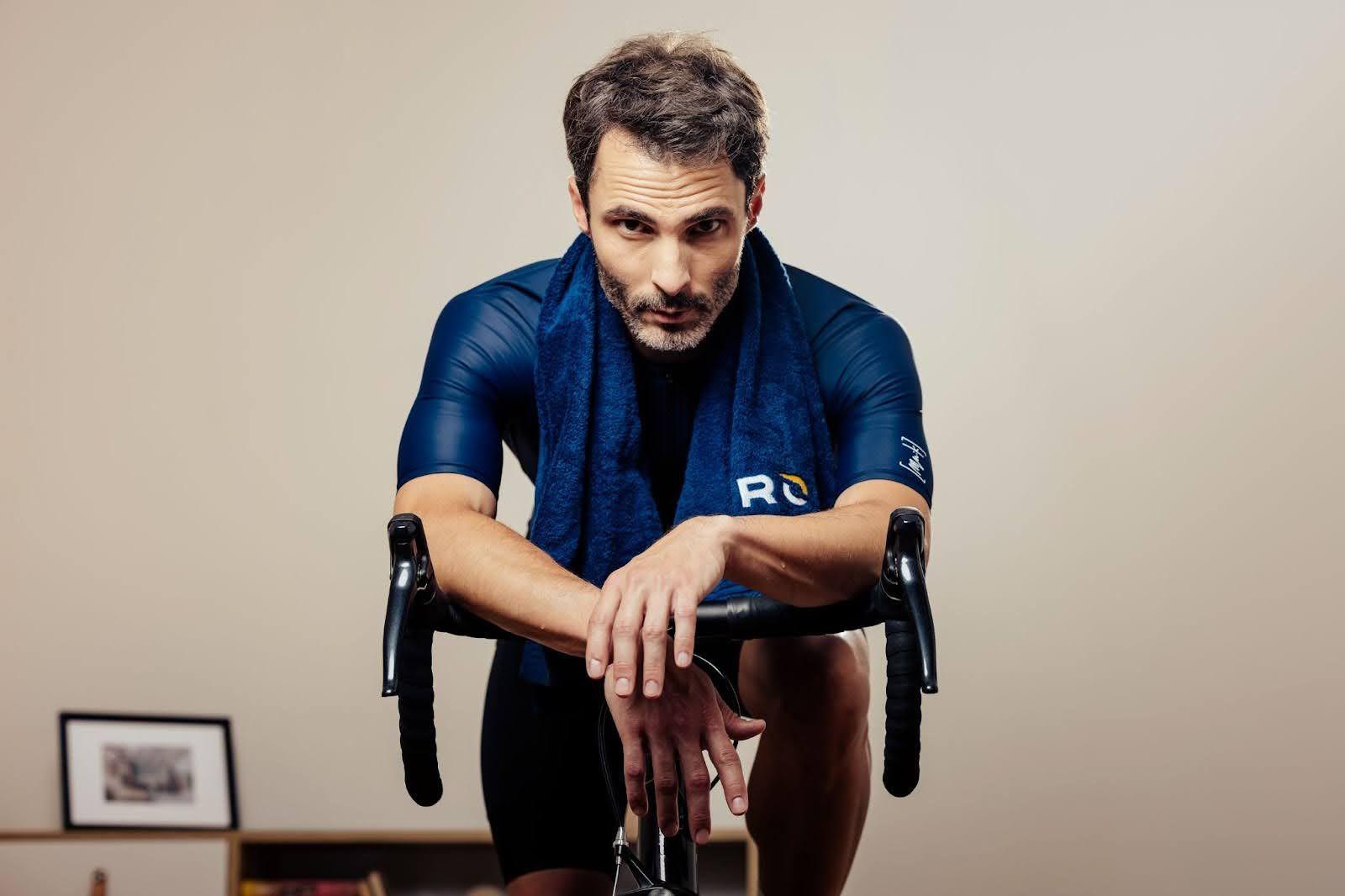What is Functional Threshold Power (FTP)?
FTP - or Functional Threshold Power - is a cyclist's highest power output for around one hour. It's a key performance metric used in training and racing. The FTP metric helps scale and manage your workouts to your current fitness level by defining your power zones for power-based training.
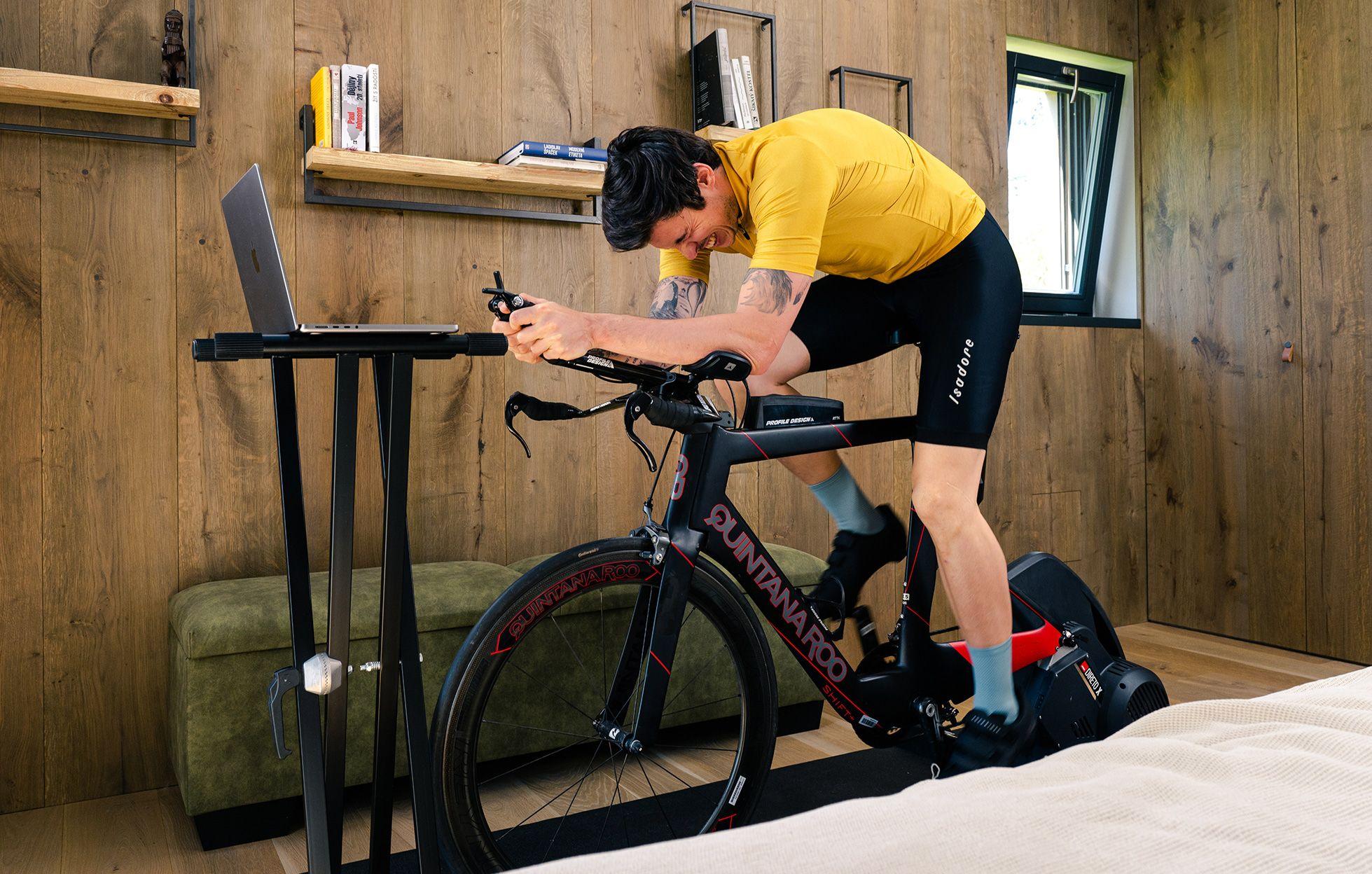 FTP is the highest power a rider can maintain without fatigue for approximately one hour.
FTP is the highest power a rider can maintain without fatigue for approximately one hour.
The Ramp Test is one of the most convenient and accurate FTP tests available for most riders to calibrate one's training zones correctly. Even though it's tough, it is quick to execute, so one can frequently complete it to track fitness changes. Alternatively, do 20 minutes as hard as possible and subtract 5% of your average watts. Both versions will give you a very close approximation of what you could do for an hour, but they will be less painful.
Before attempting this FTP test, check your trainer calibration; you should be well-rested from prior training. Once completed, ROUVY will automatically set your FTP and training zones for you, or you can insert them manually.
How do I set up my power training zones?
The key relationship is between time and intensity. Make sure that your intensity is correct for the amount of time that you are training. Here is a handy guide.
- Zone 1 - Active Recovery (55-65% FTP) - Very low-intensity training. Requires no concentration to maintain pace, and continuous conversation is possible. This zone is suitable for active recovery after strenuous training days or racing and between interval efforts and at a pace that is easy to sustain almost indefinitely.
- Zone 2 - Endurance (65-75% FTP) - or LSD (*Long Slow Distance*) is riding carried out to build a fitness base and form the foundation for one's training. Especially for beginners, for building a fitness foundation and is the fat-burning zone. Endurance rides help to increase one's aerobic capacity; at this intensity, the body can use fat for energy, improving the body's efficiency. The endurance pace provides the bulk of most long rides and, in a training workout, adds training stress without the fatigue.
- Zone 3 - Tempo (76-90% FTP) - Still an aerobic zone but one that delivers a more significant training load than Zone 2 with more frequent and more leg effort and with more resulting fatigue than at Level 2. These efforts are ideal for muscular development and improving the ability to sustain higher intensities for longer. Requires concentration to maintain the pace, especially at the upper end of the zone. Breathing is more laboured than Level 2, making continuous conversation more difficult. Tempo-paced workouts are ideal for time-restricted sessions.
- Sweet Spot Z3b - High end of Zone 3 (90%) - Sweet Spot is a transitional zone between Tempo and Threshold. The Sweet Spot zone is highly beneficial, valuable, and time-effective for general-purpose fitness improvements. Sweet Spot training helps improve muscular endurance and aerobic fitness.
- Zone 4 - Threshold (91-105% FTP) - Functional Threshold Power effort (FTP) shifts fuel demands from fat to glycogen (sugar). It places significant stress on muscular endurance and improves the ability to maintain high intensities for long periods. It is also highly fatiguing and, in theory, a pace you could sustain for about an hour and one that is challenging for longer than about 20 or 30 minutes at a time—typically performed in training as multiple 'repeats' or 'blocks' in a workout.
- Zone 5 - VO2 Max (106-120% FTP) - The zone demands the maximum amount of oxygen the body can use during exercise, including high-intensity efforts pushing the cardiorespiratory capacity to the limits. Riding at VO2 Max demands both aerobic and anaerobic capacities. VO2 Max efforts are highly fatiguing, sustainable for several minutes at most, but create a very high training stimulus in the least amount of time. Training time is usually between 3-8 minutes at a time. Conversation is impossible, and doing these workouts should only be once thoroughly recovered from prior training.
- Zone 6 - Anaerobic Capacity (121-150% FTP) - Very high intensity, ideal for short-term performance and improving anaerobic capacity. It involves extreme physical exertion and is mentally challenging.
- Zone 7 - Neuromuscular Power (150% FTP +) - All-out maximal efforts in very short bursts (a few seconds) with very high intensity. Examples: short sprints and standing starts, where one generates power through high force exclusively through anaerobic metabolism. Training in this zone improves lactate tolerance and increases the body's ability to use anaerobic energy stores; however, it is the most exhausting.
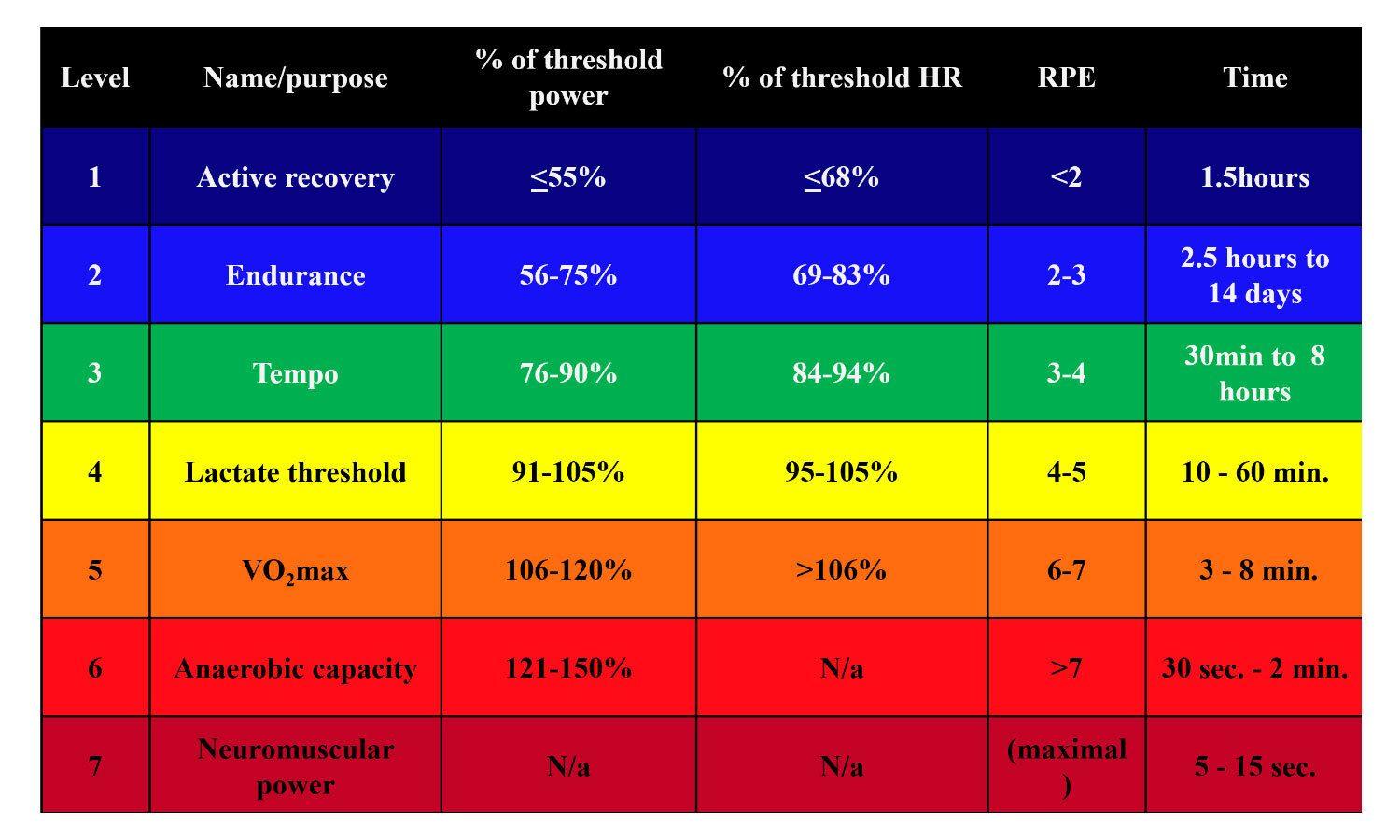
What is Normalised power (NP) and how can I use this metric to improve?
Normalised Power was developed by Dr. Andrew Coggan and introduced in his book Training and Racing With a Power Meter. NP is a measurement that adjusts the variations between a steady effort and a fluctuating effort with a result where the value is an attempt to better quantify the physiological effort of the more challenging perception of the variable effort. For a highly variable training session, NP can be much higher than average power, whereas, for a steady workout, NP and average power can be almost the same. A relatively high NP shows that the workout had a lot of variation and was more demanding than what average power may show, which can be quite deceptive at first glance.
Not all efforts are the same, and small increases in intensity and resulting effort can result in vastly different experiences and physical costs than one sees at face value. The trick is to know how much stress and recovery is needed to maximise adaptation and in turn maximise fitness. NP tells you what your actual effort was. On a route, it will show the stress you applied in your efforts, deemphasizing the downhills when you may have been spinning an easy gear. Average power would exclude the downhills and freewheeling; the remaining summary would be the Normalised Power. The remaining picture would be your actual effort or effort that counts.
An excellent example of when NP is most valuable is when power decreases due to freewheeling, coasting, or soft-pedalling - hilly rides, for instance. Normalised Power is preferred to compare your performance against your Functional Threshold Power when analysing these rides because average power is always lower during these events.
What is Intensity Factor (IF) and how is it used?
In a nutshell, IF measures how intense a workout is relative to your FTP. To understand this, the Intensity Factor reflects the relative intensity of a workout. So, to calculate IF, divide your workout's Normalised Power by your FTP. A workout with a normalised power equal to your FTP will have an Intensity Factor of 1.0.
IF is a great and easy way to determine a workout's difficulty quickly. The closer the workout's IF is to 1.0 or higher, the more intense it's likely to have been. The reason is that IF measures intensity against one's FTP (the power you can generate for an hour). Therefore, this metric is most insightful for one-hour training sessions instead of shorter or longer sessions, as one should find it impossible to ride at FTP for more than an hour.
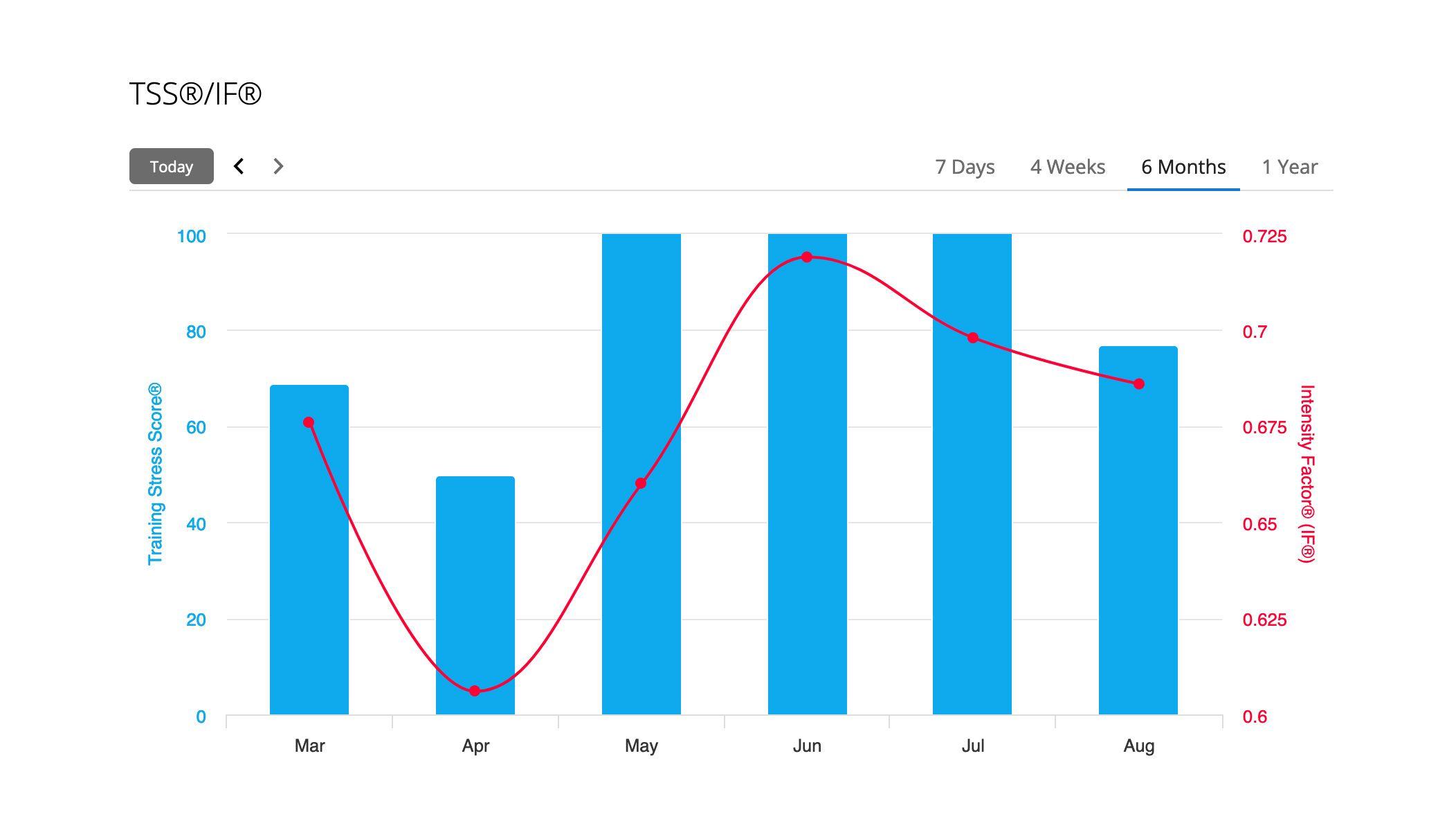 Above graphic: Using riding metrics based on power to track progress
Above graphic: Using riding metrics based on power to track progress
What is Training Stress Score (TSS)?
TSS, or Training Stress Score, is a power-based metric quantifying the body's stress from cycling activities. The calculation combines the metrics Normalised Power, Intensity Factor, and Time. This metric is not a measure of how fit you are. It is all about how you will respond to the cumulative stress and not just how it's measured. For example, in the base period, one can increase the TSS quite a bit as the load is mainly in Zone 2 power. But the more you increase the intensity in the more demanding build stages, equating to higher stress workouts, the more TSS should be reduced with the goal not to accumulate the most TSS but rather to be faster and fitter with an increase in performance. Not focusing too much on TSS is important in tapering periods when peaking for a race and avoiding overtraining.
Staying on track with training can be much easier when you have measurable goals and quantifiable sessions using riding metrics based on power to track progress and optimise performance. With some background knowledge, one can enjoy training more confidently using these metric tools.


